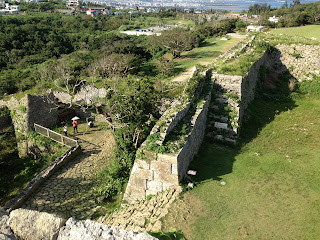Nakagusuku Castle Ruins
After the sobering experience at the Okinawa Peace Memorial Park, we trekked through the Nakagusuku Castle remains on the eastern side of the island, slightly north of Naha. The place is picturesque, which is probably why a photography class/club was meeting there! Unlike the Shuri Castle we saw recently, this one consisted mostly of the stone walls. Most castles on the island are in this state.
 |
| Gardens at the entry to the Castle park |
 |
| The well |
 |
| Stairs up from the well |



























































